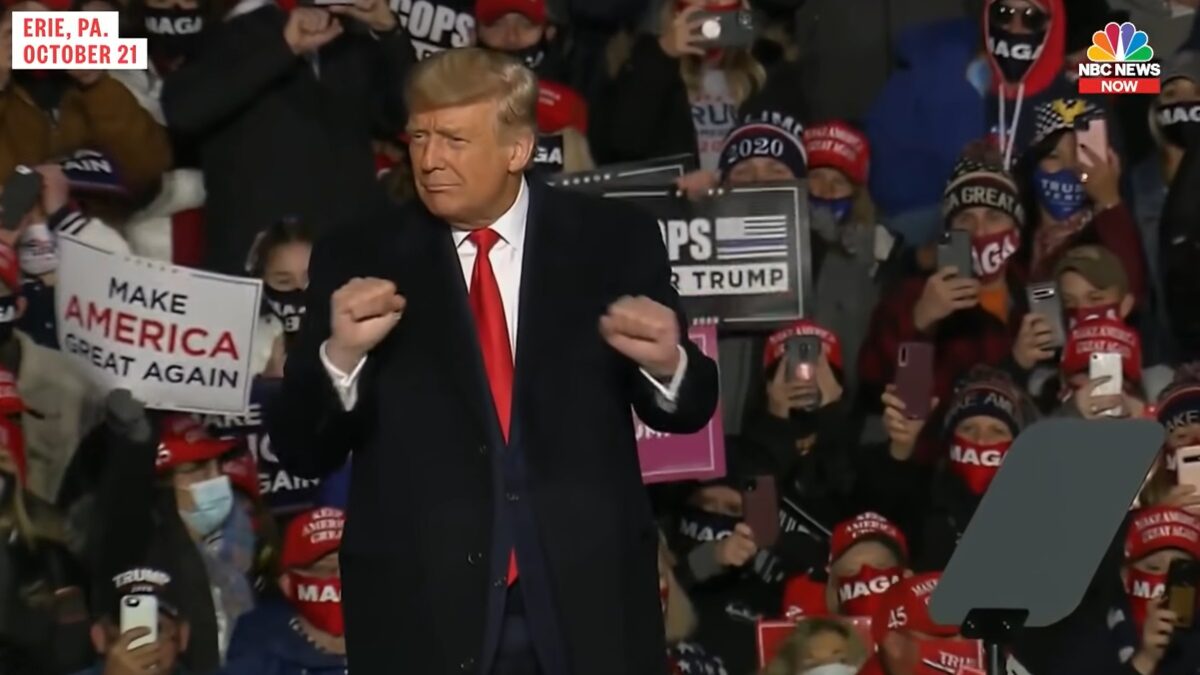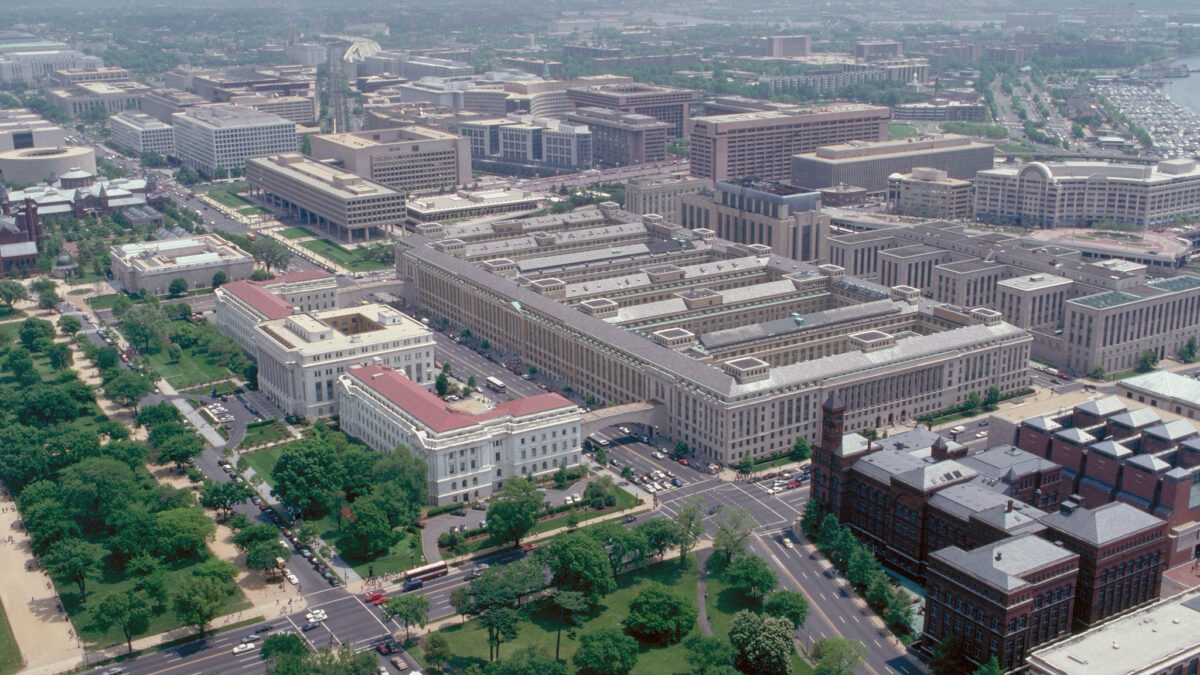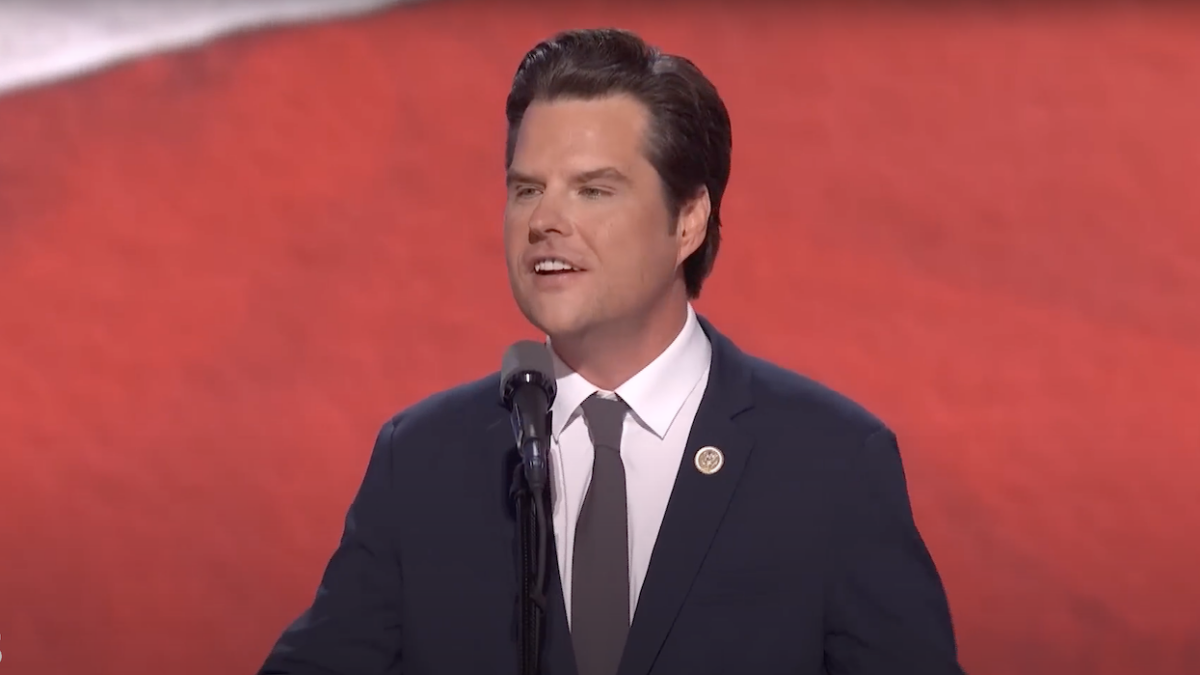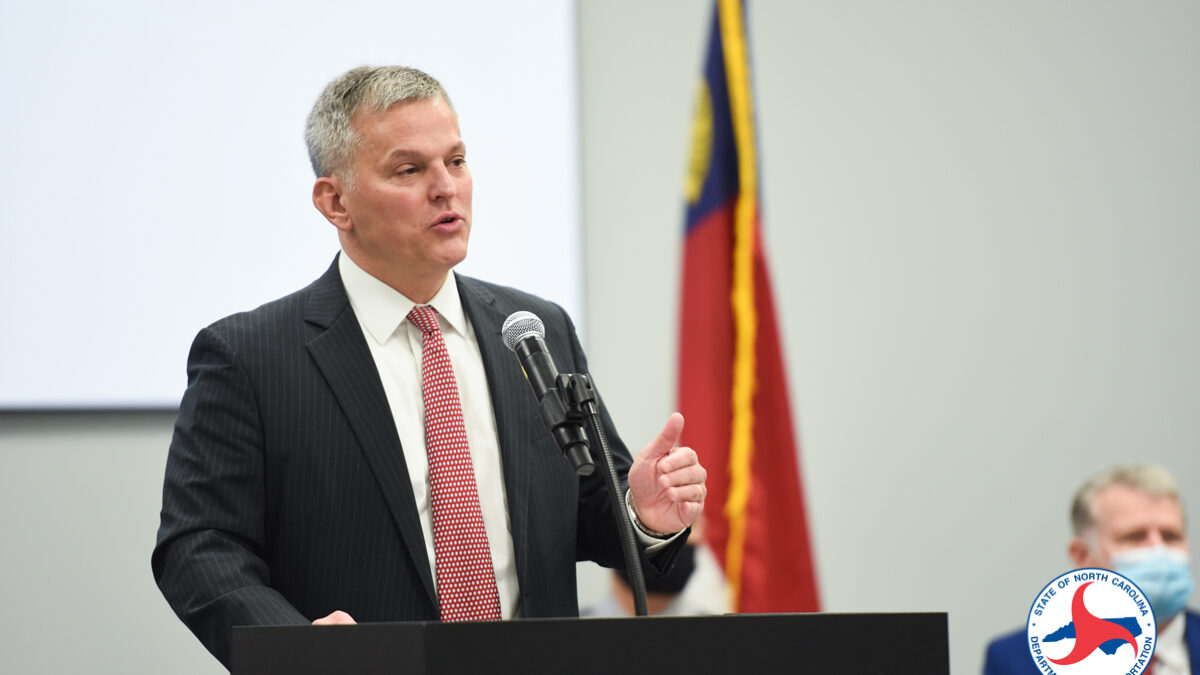
President Trump’s pardon of former Maricopa County Sheriff Joe Arpaio for criminal contempt of court related to a racial profiling case has stirred controversy, even on the right side of the political spectrum. Some see the Arpaio pardon as raw politics, an assault on the rule of law and a tacit endorsement of institutional racism. Others see it as a response to the political prosecution of an official for the political crime of attempting to enforce immigration laws the Obama administration had put on a low priority.
The reality may both more and less complicated than you might think. Were this a movie, here’s when we would hear the record scratch during a freeze-frame on Joe, with the caption “How Arpaio Got to the Pardon.”
Joe Arpaio: The ‘Toughest Sheriff in America’
Arpaio was the elected sheriff of Maricopa County from 1993 through 2016. The length of his tenure was matched by its flamboyance. As Reason magazine’s C.J. Ciaramella observed: “He made a national name for himself with his unconventional and demeaning incarceration practices; inmates lived in a tent city in the desert heat and were forced to wear old-timey striped uniforms, as well as pink underwear. Among Arpaio’s other ignoble achievements were running the only female and juvenile chain gangs in the nation.”
As early as 1995, a court ordered him to improve health care in his jails. The U.S. Justice Department launched an inquiry that found a “pattern of excessive force” against inmates by the sheriff’s staff, but its civil rights lawsuit against the Maricopa County Sheriff’s Office (MCSO) was dismissed in 1997.
The story leading to Arpaio’s conviction and pardon, however, began in 2006. As part of a crackdown on illegal immigration, Arpaio and the MCSO entered into an agreement with the U.S. Immigration and Customs Enforcement (ICE) agency under section 287(g) of the Immigration and Nationality Act, whereby members of the MCSO were cross-certified to enforce federal civil immigration laws.
The Melendres Lawsuit
In 2007, Manuel de Jesus Ortega Melendres and other plaintiffs brought a class action against Arpaio, the MCSO and other defendants, alleging the defendants violated the Fourth and Fourteenth Amendments to the U.S. Constitution by racially profiling Latino motorists and passengers.
The Melendres lawsuit, which the Justice Department joined, focused primarily on “saturation patrols” in which the MCSO would flood an area, looking for violations of federal civil immigration laws and state immigration-related laws. These sweeps often involved stopping vehicles on traffic violations as a pretext to investigating the immigration status of the vehicle’s occupants.
In 2009, ICE modified its agreement with Arpaio and the MCSO, revoking their section 287(g) authority to enforce civil immigration laws except in jails. Lawmakers and immigration rights groups had lobbied the Obama administration to curtail the section 287(g) program in general, and with respect to the MCSO in particular based on the operations at issue in the Melendres case.
The Injunctions Against Arpaio
In 2011, during pretrial proceedings, district court Judge G. Murray Snow (a Bush appointee) ruled in favor of the Melendres plaintiffs on some of their constitutional claims. He also entered a preliminary injunction barring the defendants from detaining people based solely on reasonable suspicion that they were unlawfully present in the country.
In 2013, after a non-jury trial, Snow concluded Arpaio’s policy violated the Fourth and Fourteenth Amendments by using race as a factor in determining where to conduct patrols, in deciding whom to stop and investigate for civil immigration violations, and in prolonging detentions of Latinos while their immigration status was confirmed.
Snow’s reasoning was similar in both decisions. By itself, unauthorized presence in this country is a civil violation of law, not a criminal offense. Local law enforcement officers do not have the inherent authority to investigate civil immigration violations, including status violations.
After the MCSO lost its section 287(g) field authority, the only immigration laws its officers had the power to investigate were federal criminal laws or state laws that had not been enjoined (as portions of Arizona’s Senate Bill 1070 had been at that time). When the MCSO merely suspected a person of being in the country without authorization, it did not (absent additional facts) have probable cause for arrest or even the reasonable suspicion needed to engage in a brief investigatory detention of such persons.
Nevertheless, Arpaio and the MSCO continued operations under policies they developed as if they had the authority that had been revoked. It remained the MCSO’s policy and practice to detain and arrest people believed to be in the country without authorization, even when no charges could be brought.
All of the parties in the Melendres suit ultimately agreed race cannot be considered as a factor for the reasonable suspicion. In 1975, the U.S. Supreme Court ruled that believing a vehicle’s occupants were of Mexican descent, by itself, “would justify neither a reasonable belief that they were aliens, nor a reasonable belief that the car concealed other aliens who were illegally in the country.”
In the same case, the Supreme Court also observed in passing that “[t]he likelihood that any given person of Mexican ancestry is an alien is high enough to make Mexican appearance a relevant factor.” That language, while unnecessary to the decision, has been interpreted by ICE to mean that a Latino appearance can be used as one among a number of factors in establishing reasonable suspicion to justify an investigative stop.
The Ninth Circuit Court of Appeals, however, ruled en banc in 2000 that in locations where a significant portion of the legal resident population is of Hispanic ancestry, the police could not consider Hispanic descent, either alone or in conjunction with other factors, in forming a reasonable suspicion. Whatever one thinks of the Ninth Circuit’s precedent, Snow was bound to follow it.
Moreover, a racially discriminatory policy or practice is subject to strict judicial scrutiny. The judge acknowledged enforcement of immigration-related offenses is a compelling governmental interest, but Arpaio and the other defendants did not argue their policy was narrowly tailored to meet that interest, as would be required to sustain the policy.
Indeed, based on testimony quoted in the order, Snow found MCSO changed its written policies to appear racially neutral without actually implementing them. The MCSO also had no policies to ensure that officers were not engaged in racial profiling. Snow further relied on Arpaio’s public statements as sheriff, which signaled to his deputies the purpose of the continuing saturation patrols was to arrest people not legally present in the country. Lastly, he relied on the MSCO’s continuation of these operations in violation of the terms of the preliminary injunction.
Accordingly, Snow permanently enjoined Arpaio and the other defendants from, among other things, “detaining, holding or arresting Latino occupants of vehicles in Maricopa County based on a reasonable belief, without more, that such persons are in the country without authorization.” The story could have ended there. It did not.
The Civil Contempt Order and Criminal Referral
In May 2016, following 21 days of evidentiary hearings, Snow found Arpaio and other defendants in civil contempt of court. In a 162-page order, Snow found Arpaio understood, but intentionally failed to implement, the court’s preliminary injunction, while publicly asserting the MCSO had the authority to do what had been enjoined, in the belief that such activities would benefit his upcoming re-election campaign. The official misconduct went far beyond continuing immigration sweeps, which Judge Snow summarized as follows:
Defendants did not make a good faith effort to fairly and impartially investigate and discipline misconduct or to discover other materials responsive to Plaintiffs’ pretrial requests. To escape accountability for their own misconduct, and the misconduct of those who had implemented their decisions, Defendants, or their proxies, named disciplinary officers who were biased in their favor and had conflicts, Defendants remained in control of investigations in which they themselves had conflicts, Defendants promulgated special inequitable disciplinary policies pertaining only to Melendres-related internal investigations, Defendants delayed investigations so as to justify the imposition of lesser or no discipline, Defendants misapplied their own disciplinary policies, and Defendants asserted intentional misstatements of fact to their own investigators and to the court-appointed Monitor. The Defendants’ unfair, partial, and inequitable application of discipline disproportionally damaged members of the Plaintiff class.
Arpaio admitted the MCSO failed to provide items the defendants were legally obligated to disclose. Moreover, after the post-trial disclosure of additional evidence, defendants deliberately violated court orders and prevented a full recovery of relevant evidence. The judge also found Arpaio made multiple intentional misstatements of fact while under oath.
In August 2016, Snow referred Arpaio’s case for an investigation of criminal contempt, a charge the Obama Justice Department decided to pursue.
The Criminal Contempt Case
As the criminal charge carried a maximum six-month sentence, it was heard not by a jury, but by Judge Susan Bolton (a Clinton appointee recommended by Sen. Jon Kyl (R-AZ). Following a five-day trial, Bolton found Arpaio guilty of criminal contempt. She rejected Arpaio’s argument that the preliminary injunction was not clear and definite.
Bolton also rejected the argument that Arpaio had authority pursuant to Senate Bill 1070 or Section 287(g) to detain persons in the country illegally in order to cooperate with federal agencies for civil immigration violations. She reasoned that — assuming without deciding that Arpaio had such authority before the imposition of the preliminary injunction — it was clear that he and the MCSO were barred thereafter from continuing to detain people without criminal charges.
Bolton further found that Arpaio willfully violated the preliminary injunction. Again, Arpaio’s catalog of public comments that he was going to continue the policy that had been enjoined, combined with his rejection of legal advice, left the judge with no doubt that Arpaio knew or should have known his conduct violated the 2011 court order.
Were the Arpaio Case and Arpaio Pardon Political?
Viewing the court record and the public record as a whole, it is easy to argue that politics were involved in the Arpaio case. It is less easy to argue politics played a significant role or ran in only one direction.
For example, the Obama administration’s termination of Arpaio’s section 287(g) authority to enforce civil immigration laws carries at least a whiff of politics. But a key to Snow’s decision is that Arpaio’s policy of using race as one factor in assessing reasonable suspicion for detaining motorists to check immigration status was largely a continuation of ICE’s legal interpretation, a view already rejected the Ninth Circuit.
It could be argued that the Ninth Circuit’s precedent, which declined to follow dicta in the 1975 Supreme Court decision, was in some sense ideological or political. But it was a decision of the full court and this point of law was not disputed. Even if one disagreed with the Ninth Circuit, a decision issued in 2000 cannot be blamed on the Obama administration.
One might also suspect politics were involved in the Justice Department’s decision to pursue Arpaio for criminal contempt. Perhaps so. Local, small-p politics also may have been a factor. Local prosecutors, who will continue to regularly appear before Snow, may well have taken his lengthy, detailed and damning findings of fact, extending beyond Arpaio’s flouting of the injunction, as a message as to how he thought they should proceed.
Or perhaps the decision was made solely on an impartial assessment of the facts of the case. Stranger things have happened.
On the other hand, the record clearly establishes that Arpaio did not divorce politics from his law enforcement duties. In 2013, Maricopa County settled a string of lawsuits involving Arpaio pursuing trumped-up charges against his critics. In addition, hyperbolic self-promotion was a hallmark of Arpaio’s career long before the Obama administration, and the Melendres case was no exception. Arpaio told Fox News that his political popularity stemmed from his immigration enforcement policies and bragged of the millions of dollars in political donations he received as a result.
An Arpaio lieutenant testified that Arpaio used the immigration sweeps as a political tool to gain attention. He also testified that Arpaio demanded constant operations and arrests for the purpose of issuing press releases to the media.
Moreover, Arpaio’s public statements — documented at length in the various court decisions — consistently gave the impression that he enjoyed having the Obama administration and later, the federal courts, as political foils. If Arpaio was a political target, it was in no small part due to his desire to be one.
When Arpaio proudly and defiantly stated he would “never give in to control by the federal government,” the spin that he was somehow a victim rings a bit hollow. The combination of transgressive swagger with claimed victim status, however, is a very Trumpian pose.
All of this was the backdrop for Trump’s pardon of Arpaio. It does not appear that Trump was aware of much of it. A more traditional White House might have tried to sell the pardon as opposition to the Ninth Circuit precedent and in favor of ICE’s interpretation of the law. Trump’s pardon could have been spun as not endorsing a sheriff’s defiance of court orders, but as a check on a generally liberal court’s disregard of a Supreme Court decision. The spin that Arpaio was enforcing immigration law the Obama administration ignored falls flat if ICE could not have acted in the way Arpaio did.
But this is not a traditional White House. Thus, Arpaio’s pardon was not reviewed by the Justice Department, and would not have met the pardon attorney’s criteriafor recommending clemency. Moreover, aside from Arpaio’s age, there was much in his record to recommend against a pardon — to a traditional president.
Trump’s use of his constitutional pardon power does not require such review, but as the Washington Examiner‘s critical editorial noted, such review exists to help prevent abuse of the power and to boost public confidence in presidential pardons. Instead, Trump teased Arpaio’s pardon at a political rally in Phoenix, asking a friendly crowd whether they liked his long-time supporter, in a display that looked not merely political, but reminiscent of a gladiatorial bout or a reality television show.
It was also the sort of decision made by an administration that gives the impression of believing it politically benefits when the Left is outraged over racial controversies. Capricious, politically motivated, and generating more heat than light, it was a thoroughly Trumpian pardon.








